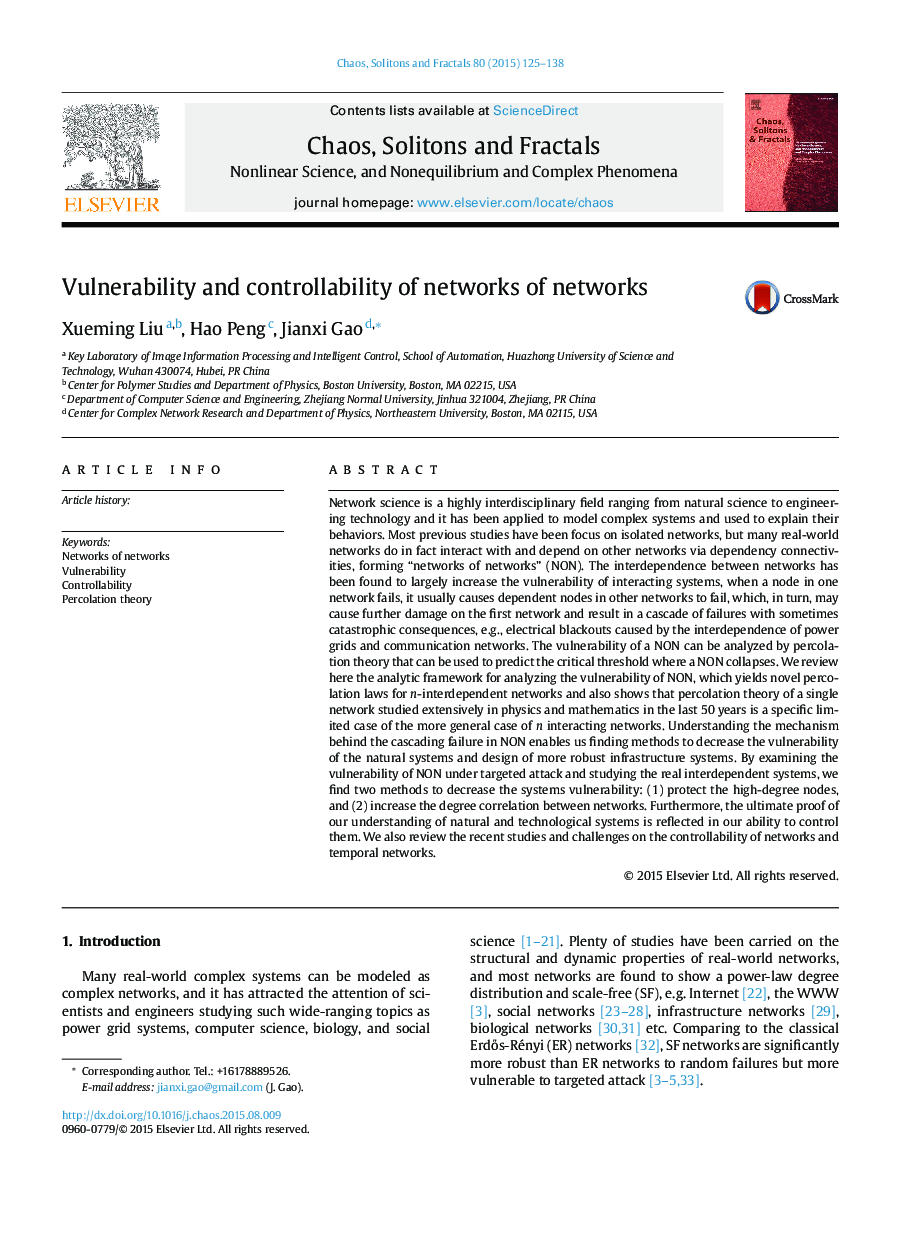| Article ID | Journal | Published Year | Pages | File Type |
|---|---|---|---|---|
| 8254826 | Chaos, Solitons & Fractals | 2015 | 14 Pages |
Abstract
Network science is a highly interdisciplinary field ranging from natural science to engineering technology and it has been applied to model complex systems and used to explain their behaviors. Most previous studies have been focus on isolated networks, but many real-world networks do in fact interact with and depend on other networks via dependency connectivities, forming “networks of networks” (NON). The interdependence between networks has been found to largely increase the vulnerability of interacting systems, when a node in one network fails, it usually causes dependent nodes in other networks to fail, which, in turn, may cause further damage on the first network and result in a cascade of failures with sometimes catastrophic consequences, e.g., electrical blackouts caused by the interdependence of power grids and communication networks. The vulnerability of a NON can be analyzed by percolation theory that can be used to predict the critical threshold where a NON collapses. We review here the analytic framework for analyzing the vulnerability of NON, which yields novel percolation laws for n-interdependent networks and also shows that percolation theory of a single network studied extensively in physics and mathematics in the last 50 years is a specific limited case of the more general case of n interacting networks. Understanding the mechanism behind the cascading failure in NON enables us finding methods to decrease the vulnerability of the natural systems and design of more robust infrastructure systems. By examining the vulnerability of NON under targeted attack and studying the real interdependent systems, we find two methods to decrease the systems vulnerability: (1) protect the high-degree nodes, and (2) increase the degree correlation between networks. Furthermore, the ultimate proof of our understanding of natural and technological systems is reflected in our ability to control them. We also review the recent studies and challenges on the controllability of networks and temporal networks.
Related Topics
Physical Sciences and Engineering
Physics and Astronomy
Statistical and Nonlinear Physics
Authors
Xueming Liu, Hao Peng, Jianxi Gao,
